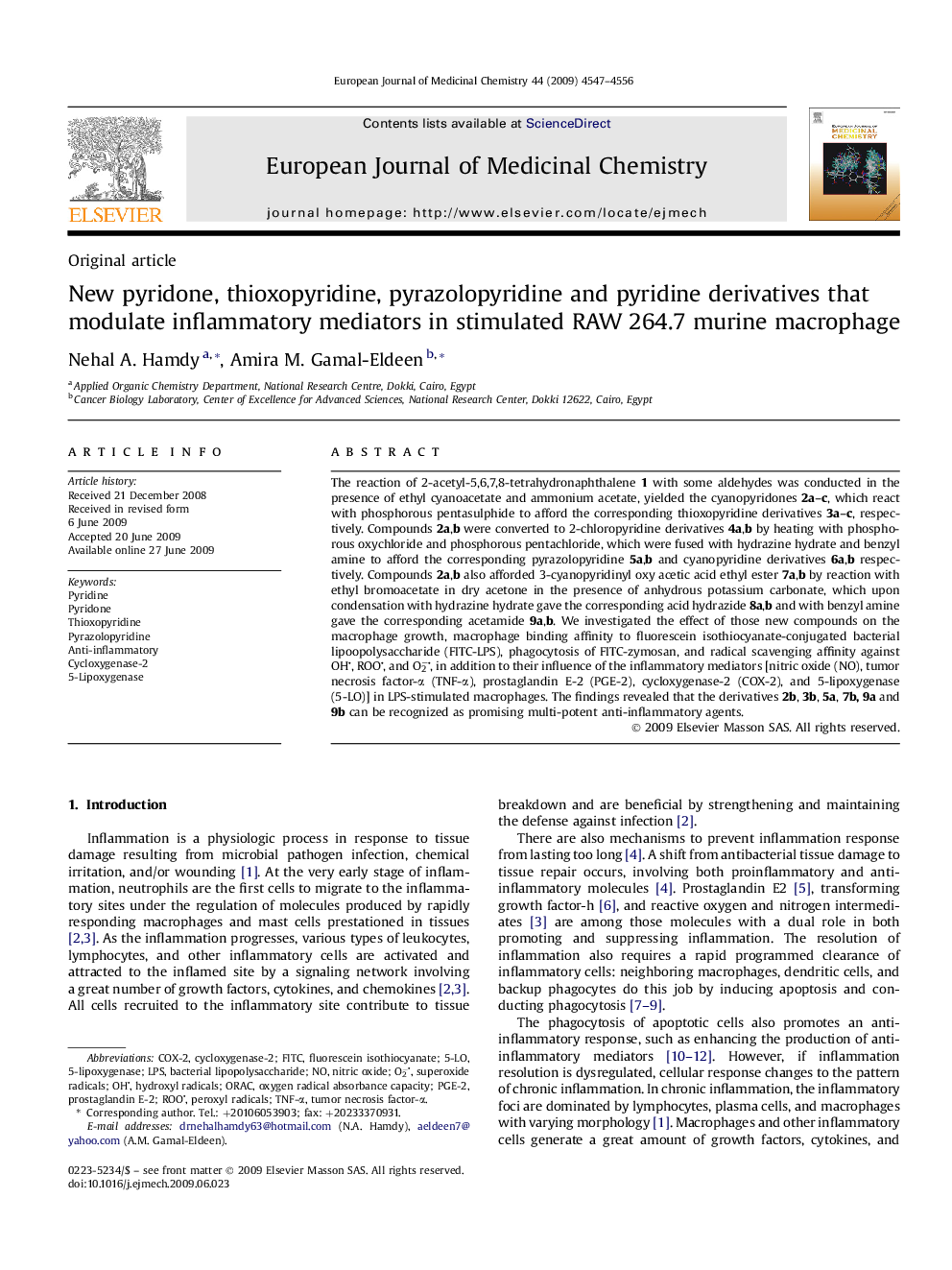| Article ID | Journal | Published Year | Pages | File Type |
|---|---|---|---|---|
| 1393258 | European Journal of Medicinal Chemistry | 2009 | 10 Pages |
The reaction of 2-acetyl-5,6,7,8-tetrahydronaphthalene 1 with some aldehydes was conducted in the presence of ethyl cyanoacetate and ammonium acetate, yielded the cyanopyridones 2a–c, which react with phosphorous pentasulphide to afford the corresponding thioxopyridine derivatives 3a–c, respectively. Compounds 2a,b were converted to 2-chloropyridine derivatives 4a,b by heating with phosphorous oxychloride and phosphorous pentachloride, which were fused with hydrazine hydrate and benzyl amine to afford the corresponding pyrazolopyridine 5a,b and cyanopyridine derivatives 6a,b respectively. Compounds 2a,b also afforded 3-cyanopyridinyl oxy acetic acid ethyl ester 7a,b by reaction with ethyl bromoacetate in dry acetone in the presence of anhydrous potassium carbonate, which upon condensation with hydrazine hydrate gave the corresponding acid hydrazide 8a,b and with benzyl amine gave the corresponding acetamide 9a,b. We investigated the effect of those new compounds on the macrophage growth, macrophage binding affinity to fluorescein isothiocyanate-conjugated bacterial lipoopolysaccharide (FITC-LPS), phagocytosis of FITC-zymosan, and radical scavenging affinity against OH, ROO, and O2−, in addition to their influence of the inflammatory mediators [nitric oxide (NO), tumor necrosis factor-α (TNF-α), prostaglandin E-2 (PGE-2), cycloxygenase-2 (COX-2), and 5-lipoxygenase (5-LO)] in LPS-stimulated macrophages. The findings revealed that the derivatives 2b, 3b, 5a, 7b, 9a and 9b can be recognized as promising multi-potent anti-inflammatory agents.
Graphical abstractWe prepared the following derivatives: cyanopyridones 2a–c, thieno[2,3-b]pyridines 3a–c, 2-chloropyridines 4a,b, pyrazolopyridines 5a,b, cyanopyridines 6a,b, 3-cyanopyridinyl oxy acetic acid ethyl ester 7a,b, acid hydrazide 8a,b and acetamide 9a,b. The derivatives 2b, 3b, 5a, 7b, 9a and 9b can be recognized as promising anti-inflammatory agents.Figure optionsDownload full-size imageDownload as PowerPoint slide
